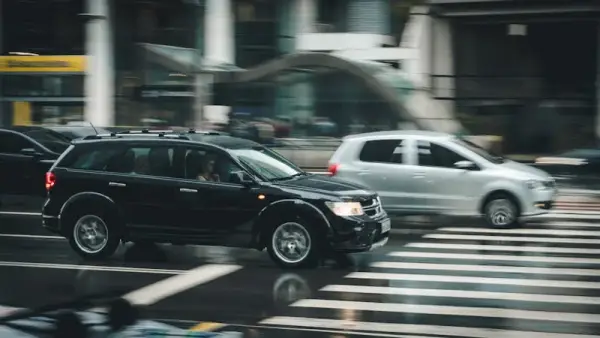As an insurance investigator with years of experience, I have come across various tactics used by insurance companies to track down uninsured drivers.
It’s a challenging task, but with the right strategies and tools, these companies can locate and take action against those who drive without insurance coverage.
In this article, I will delve into the methods and techniques insurance companies utilize to identify and deal with uninsured drivers.
How do Insurance Companies Identify Uninsured Drivers?
Uninsured drivers pose a significant risk on the road, as they can’t cover the costs of potential accidents they may cause.
Insurance companies are vigilant in detecting these drivers to protect themselves and their insured clients. Here are some tactics they use:
- Insurance Database Checks: Insurance companies have access to databases that store information about insured vehicles. By cross-referencing their policyholder data with these databases, they can easily identify vehicles without coverage.
- License Plate Recognition Technology: Many insurance companies use advanced technology that can scan license plates and instantly check if the vehicle is insured. This allows them to track down uninsured drivers more efficiently.
- Public Records Searches: Insurance companies may also conduct public records searches to find information about vehicle ownership and insurance status. This method helps them identify uninsured drivers who may have slipped through the cracks.
- Tip-Offs: Sometimes, insurance companies receive tips from concerned citizens or witnesses of accidents involving uninsured drivers. These tips can be valuable leads in tracking down individuals driving without insurance.
- Collaboration with Law Enforcement: Insurance companies often collaborate with law enforcement agencies to access their databases and share information about uninsured drivers. This partnership enhances their ability to locate and take action against these individuals.
The Tactics Insurance Companies Use To Track Down Uninsured Drivers
Tracking down uninsured drivers requires a combination of persistence, technology, and collaboration.
Here are some specific tactics insurance companies use to achieve this goal:
Sending Letters and Notifications
Insurance companies often send letters and notifications to individuals suspected of driving without insurance coverage.
These letters typically warn the recipients about the consequences of driving uninsured and urge them to obtain proper insurance immediately.
By documenting these communications, insurance companies create a paper trail that can be used as evidence in legal proceedings.
Utilizing Surveillance and Investigation Teams
Some insurance companies employ surveillance and investigation teams to track down uninsured drivers.
These teams may conduct stakeouts near known locations of uninsured drivers or use tracking devices to monitor their movements.
By gathering concrete evidence of uninsured driving, insurance companies can build a strong case against these individuals.

Working with Private Investigators
In more complex cases, insurance companies may enlist the help of private investigators to locate uninsured drivers.
These investigators have the skills and resources to conduct thorough investigations, such as interviewing witnesses, conducting stakeouts, and gathering evidence of uninsured driving.
Their expertise can be instrumental in building a case against uninsured drivers.
Collaborating with Legal Authorities
Insurance companies often work closely with legal authorities to track down uninsured drivers.
By sharing information and coordinating efforts with law enforcement agencies, insurance companies can expedite the process of identifying and penalizing uninsured drivers.
This collaboration ensures that uninsured drivers are held accountable for their actions.
Using Data Analytics and Predictive Modeling
Some insurance companies leverage data analytics and predictive modeling to identify uninsured drivers.
By analyzing patterns and trends in their customer data, insurance companies can pinpoint individuals who are more likely to drive without insurance.
This proactive approach helps insurance companies target high-risk drivers and prevent potential losses.
Offering Rewards for Information
In some cases, insurance companies may offer rewards for information leading to the identification of uninsured drivers.
This incentive encourages individuals to come forward with valuable tips and leads.
By incentivizing cooperation, insurance companies can gather crucial information that helps them track down uninsured drivers effectively.
Conducting Sting Operations
Insurance companies may also conduct sting operations to catch uninsured drivers in the act.
By working with law enforcement agencies and setting up checkpoints or targeted enforcement activities, insurance companies can apprehend uninsured drivers and take immediate action against them.
These operations send a strong message to uninsured drivers about the consequences of driving without insurance.
Implementing Technology Solutions
Advancements in technology have revolutionized the way insurance companies track down uninsured drivers.
From license plate recognition cameras to GPS tracking devices, insurance companies have a wide range of tools at their disposal.
These technology solutions enable insurance companies to monitor and identify uninsured drivers with greater accuracy and efficiency.
Pursuing Legal Action
When all other tactics fail, insurance companies may resort to pursuing legal action against uninsured drivers.
This can involve filing civil lawsuits to recover damages related to uninsured accidents or working with law enforcement to press criminal charges for driving without insurance.
By holding uninsured drivers accountable through legal means, insurance companies deter others from engaging in similar behaviors.

Frequently Asked Questions
1. How do insurance companies benefit from tracking down uninsured drivers?
Insurance companies benefit from tracking down uninsured drivers by reducing their exposure to financial risks.
By identifying and penalizing uninsured drivers, insurance companies can minimize their losses from accidents involving these individuals.
Additionally, tracking down uninsured drivers helps insurance companies maintain the integrity of their policies and pricing, ensuring that responsible drivers are not unfairly burdened.
2. Can insurance companies report uninsured drivers to the authorities?
Yes, insurance companies can report uninsured drivers to the authorities.
In many jurisdictions, driving without insurance is a legal offense, and insurance companies have a duty to report such violations.
By working with law enforcement agencies, insurance companies can ensure that uninsured drivers face the appropriate consequences for their actions.
3. What are the penalties for driving without insurance?
The penalties for driving without insurance vary by jurisdiction but can include fines, license suspension, vehicle impoundment, and even criminal charges in some cases.
Uninsured drivers may also be held financially responsible for any damages or injuries they cause in an accident.
These penalties are intended to deter individuals from driving without insurance and protect other road users.
4. How can uninsured drivers protect themselves from legal action?
Uninsured drivers can protect themselves from legal action by obtaining the required insurance coverage as mandated by law.
By purchasing an auto insurance policy that meets the minimum legal requirements, drivers can avoid penalties and consequences for driving uninsured.
It’s essential for all drivers to carry valid insurance to protect themselves and others on the road.
5. Can insurance companies track down uninsured drivers across state lines?
Insurance companies face challenges when tracking down uninsured drivers across state lines due to varying regulations and jurisdictions.
However, through partnerships and collaboration with other insurance companies and law enforcement agencies, it is possible to locate uninsured drivers who operate in multiple states.
By sharing information and coordinating efforts, insurance companies can overcome these obstacles and hold uninsured drivers accountable.
6. What recourse do insurance companies have against uninsured drivers who cause accidents?
Insurance companies have various recourse options against uninsured drivers who cause accidents. They can pursue legal action to recover the costs of damages and injuries from the uninsured driver personally.
Insurance companies may also seek restitution through civil lawsuits or work with law enforcement to press criminal charges against the uninsured driver.
These measures are essential to protect the rights of insured individuals and hold uninsured drivers responsible for their actions.
Conclusion
In conclusion, insurance companies employ a wide range of tactics to track down uninsured drivers and protect themselves from potential losses.
From utilizing advanced technology to collaborating with law enforcement, insurance companies leave no stone unturned in their pursuit of identifying and penalizing those who drive without insurance coverage.
By implementing these tactics effectively, insurance companies can uphold the integrity of the insurance industry and ensure a safer environment for all road users.
Remember, driving without insurance is not only illegal but also puts yourself and others at risk. Stay covered, stay safe!

